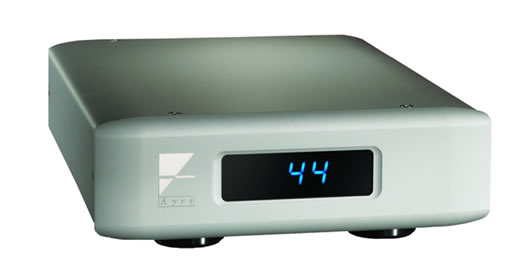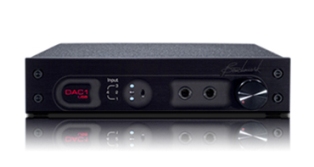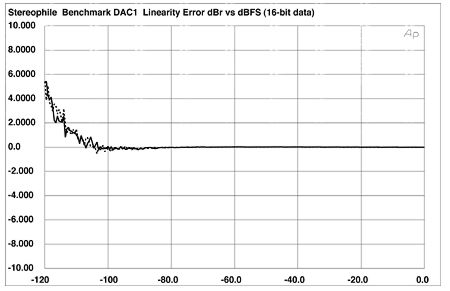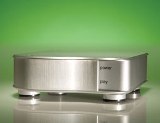- Connecting audio
- Audio PC
- Raspberry & Co
- All in Ones
- Bluetooth
- Chromecast
- Streaming audio player
- Music server
- USB Audio
- Real-time audio over IP
- FireWire DAC
- Multi-channel DAC
- NAS
- Remote control
- Vinyl rippers
- Acoustic materials
- Active crossover
- Active speakers
- Single driver speakers
- Invisible speakers
- Sound card
- Digital room correction
- Headphone
- Portable media players
USB-DAC
A USB DAC is a very flexible solution to convert digital audio as almost every computer (including smartphones) has USB.
Basically a USB DAC is a external sound card..
If you use a laptop this is the way to go if you want to improve on the onboard audio.
Asynchronous USB Audio Class 2 DAC
UAC2 uses High Speed mode (USB 2, 480 MHz).
Today you see specs like 32bit / 768kHz PCM, DSD512 USB.
Indeed the USB receiver accepts PCM audio up to 32 bits / 768 kHz and DSD512 ( 1 bit / 22.5792 MHz).
Indeed USB2 in High speed mode is fast enough to handle this amount of data.
From mid-2010 on both OSX and Linux supports USB audio class 2 natively.
In April 2017, an update of Win10 finally brought native mode drivers.
You need to install a third party Class 2 Audio driver at the PC side if you use older versions of Win.
For a while I maintained a list of DACS with UAC2 input. Today, almost all USB DACs are UAC2 compatible. This dated list can be found here.
24 bit Asynchronous USB Class 1 Audio DACs
Around 2008, the first models featuring asynchronous synchronization appeared on the market.
This is considered the best solution as the DAC is in control of the buffer management allowing a free running clock.
Basically this architecture means zero input jitter.
At that time USB Audio class 1 was the standard.
It can do up to 2 channel 24 bits PCM audio with a 96 kHz sample rate.
All major operating systems (Win, OSX and Linux) do have native mode USB Audio class 1 drivers.
This allows for a plug&play installation.

Ayre QB-9, made USB audio salonfähig in 2008 employing asynchronous USB.
A couple of models.
24 bit Adaptive mode USB Class One Audio DACs
The problem with adaptive mode is indeed the DAC has to adapt its speed to the data rate as send by the PC.
A bit like SPDIF.
Before 2010 adaptive mode was common. From 2010 on, asynchronous mode took over.
A star of those early days of USB audio is the Benchmark DAC1.

Benchmark USB DAC 1 $1275.00
Digital input:
- USB, Optical, Coaxial, AES/EBU(XLR)
- Input Sample Frequency Range: 28 to 195 kHz
- Maximum Input Word Length: 24 bits
- Advanced USB™ computer audio interface for native 24-bit/96-kHz USB audio
- Compatible with Windows Vista/XP/2000 and Mac OS X without driver installation
Analog output: balanced (XLR) and unbalanced (RCA)

16 bit USB
They are typical for the period up to 2010 when USB audio was in its infancy.
Audio brands offering USB-DAC's at that time where rare.
Most of the time it was a computer manufacturer or a startup producing this type of product.

The Silverstone EB01 ($89.99) was produced by Silverstone, a case maker for PC's
Most of these products where limited to 32kHz, 44.1kHz, 48kHz
This because you could get a simple and cheap receiver supporting this rates.
As a consequence, a lot of people believed USB audio to be limited to this range.
The pioneers of USB audio can be found here.
Vendor specific
Today almost all USB audio is UAC2 (USB Audio Class 2).
In those early days of USB audio, some manufacturers didn't use UAC1 but developed their own solution.
Instead of the isochronous mode, they used bulk mode.
Bulk mode is asynchronous by design.
As it is bulk mode,
• No guarantee of bandwidth or minimum latency
• Error detection via CRC, with guarantee of delivery.
Isochronous mode is exactly the reverse.
It is not trivial to develop a driver.
You have to do so for each OS supported and check its working for each update of the OS.
In practice it often turned out to be a very buggy road.
Today almost all audio brands buy a USB receiver from a specialist.
DSD over USB
USB audio was PCM audio only.
A couple of guys formulated an open standard (DoP) allowing direct DSD playback on a PC to a USB DAC. The DSD is camouflaged as being PCM so can be transmitted over USB.
Not only must your hardware (DAC) support DSD but your media player must support it as well.
Native DSD
UAC2 (USB Audio Class 2) has a UAC_FORMAT_TYPEI_RAW_DATA This is used to transfer DSD straight to a DAC.
This make DoP superfluous.
More technical information about USB audio can be found here.
DSD - The welltempered computer
DoP - The welltempered computer
USB Audio Software Design Guide - XMOS 2015

